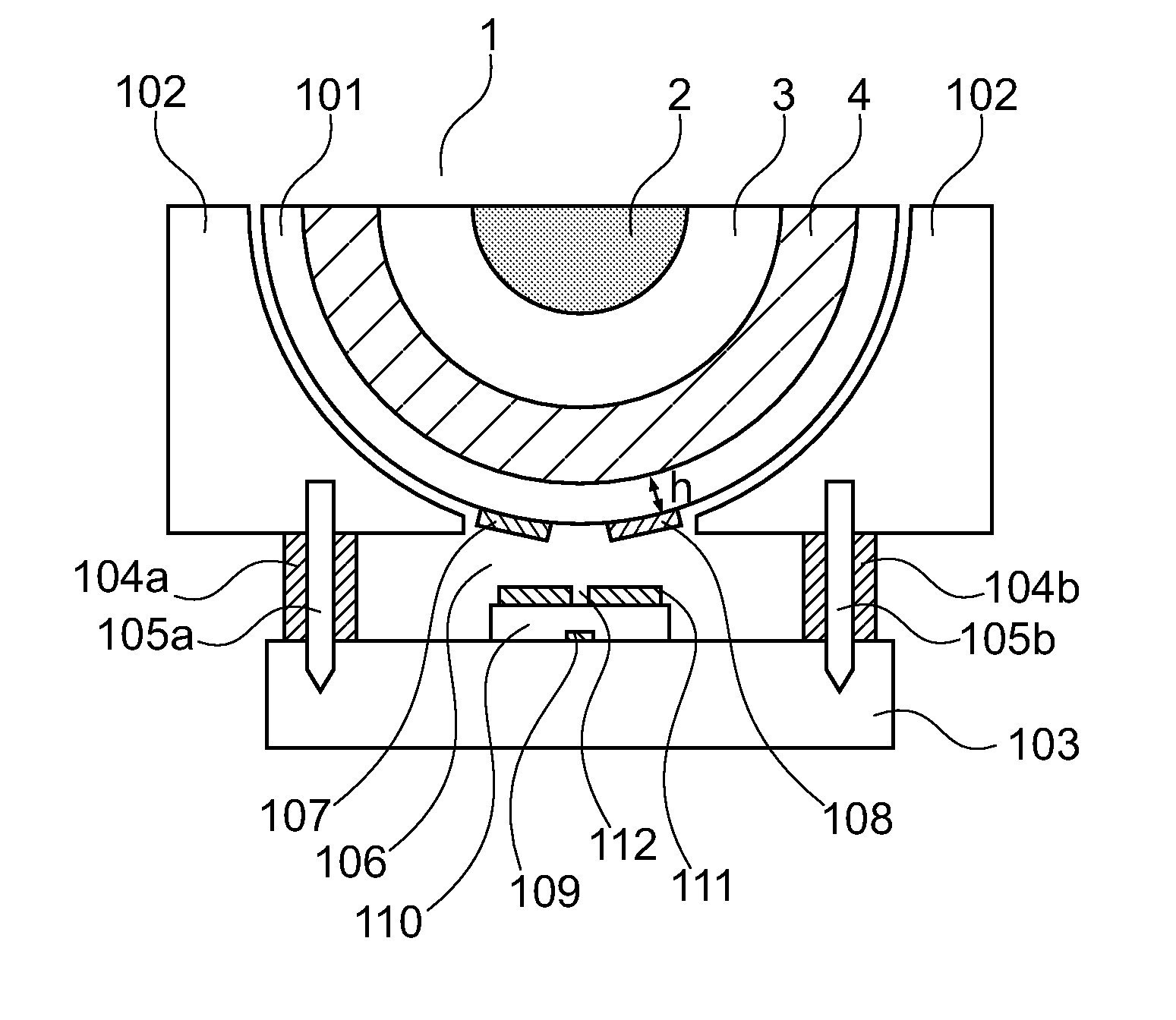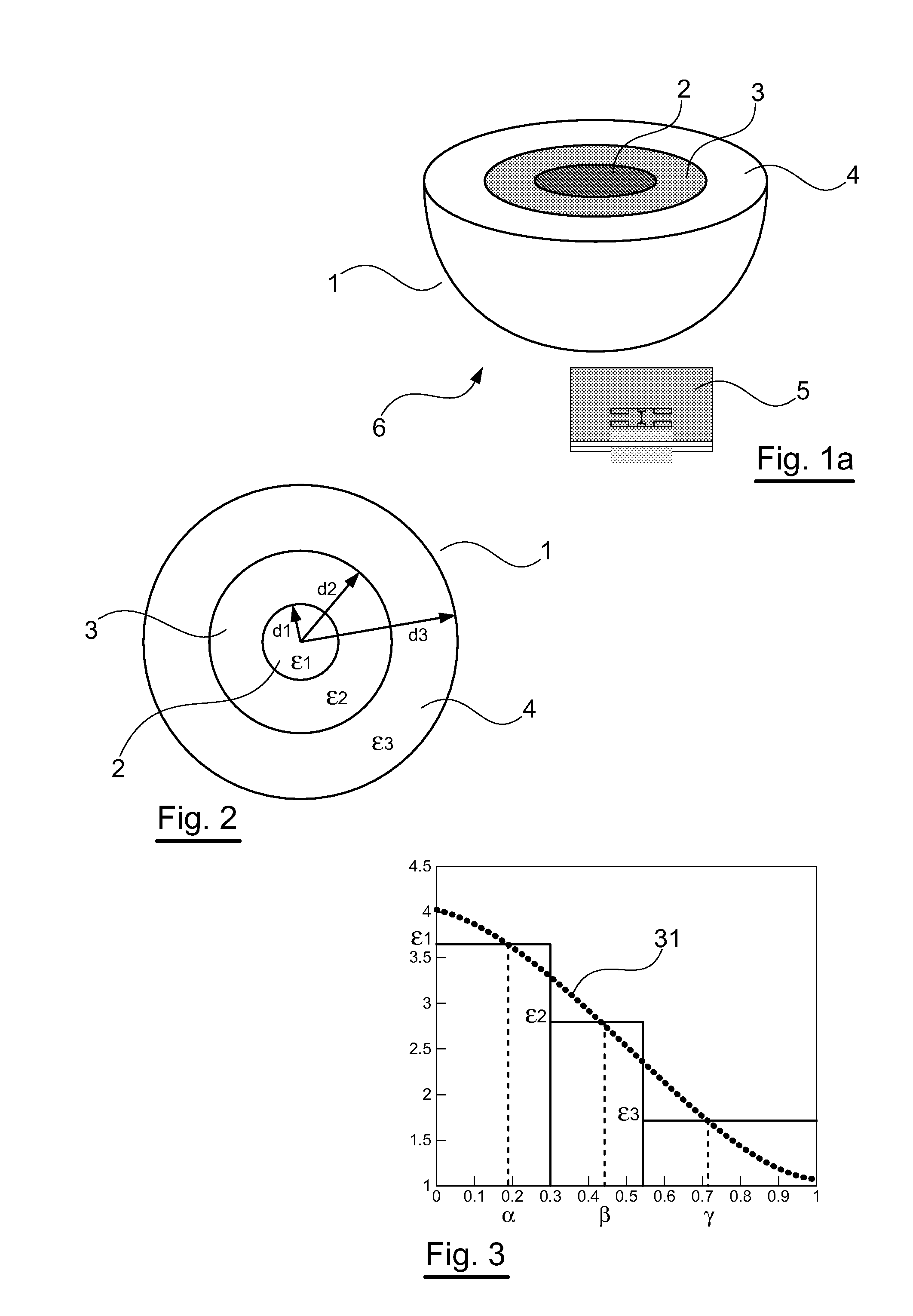Inhomogeneous lens with maxwell's fish-eye type gradient index, antenna system and corresponding applications
a gradient index, fish-eye type technology, applied in the field of lens-type focusing systems, can solve the problems of difficult to strictly follow this law when producing lenses, high production cost, and mechanical complexity of last techniques, and achieve the effect of good radiation properties and low permittivity
- Summary
- Abstract
- Description
- Claims
- Application Information
AI Technical Summary
Benefits of technology
Problems solved by technology
Method used
Image
Examples
first embodiment
[0106]An example of a complete structure 6 mentioned above (combination of the antenna array 5 above with the Maxwell's fish-eye lens 1 according to the first line of the table above) was simulated with the 3D CST Microwave Study software (registered trademark) (based on the finite-difference time-domain method), and then measurements were taken.
[0107]A number of simulations of this antenna structure 6 example were performed by changing the distance h between these two elements so as to show the importance of this parameter. It is clear that the directivity can be quasi-stable on the frequency band considered if h is equal to 2.5 mm. Indeed, as the dielectric constant distribution is not continuous in the lens 1, the source array 5 cannot be found on the lens, but at a distance h substantially equal to the distance at which the focusing of the lens is done outside of the lens (see the description of FIGS. 4a, 4b, 5a and 5b above). This makes it possible to optimize the directivity ...
second embodiment
[0128]In this second embodiment, the means for positioning the lens 1 with respect to the printed antenna array 106 include:
[0129]an additional shell 101, having a shape fitting the external surface of the lens 1, made with a substrate of which the dielectric permittivity approximates that of air, and which can be metallized (so as to be capable of receiving one or more radiating patches);
[0130]a support (or base) 102 made of a foam material (of which the dielectric permittivity approximates that of air), and in which the lens 1 is embedded, surrounded by the additional shell 101;[0131]a metal base 103;[0132]spacers 104a, 104b made of a foam material and making it possible to maintain a predetermined distance (not to be confused with the height h, as explained below) between the lens 1 and the metal base 8; and[0133]screws 105a, 105b for assembling the support 102, the metal base 103 and the spacers 104a, 104b.
[0134]The printed antenna array 106 is the type presented above in relat...
PUM
 Login to View More
Login to View More Abstract
Description
Claims
Application Information
 Login to View More
Login to View More - R&D
- Intellectual Property
- Life Sciences
- Materials
- Tech Scout
- Unparalleled Data Quality
- Higher Quality Content
- 60% Fewer Hallucinations
Browse by: Latest US Patents, China's latest patents, Technical Efficacy Thesaurus, Application Domain, Technology Topic, Popular Technical Reports.
© 2025 PatSnap. All rights reserved.Legal|Privacy policy|Modern Slavery Act Transparency Statement|Sitemap|About US| Contact US: help@patsnap.com



